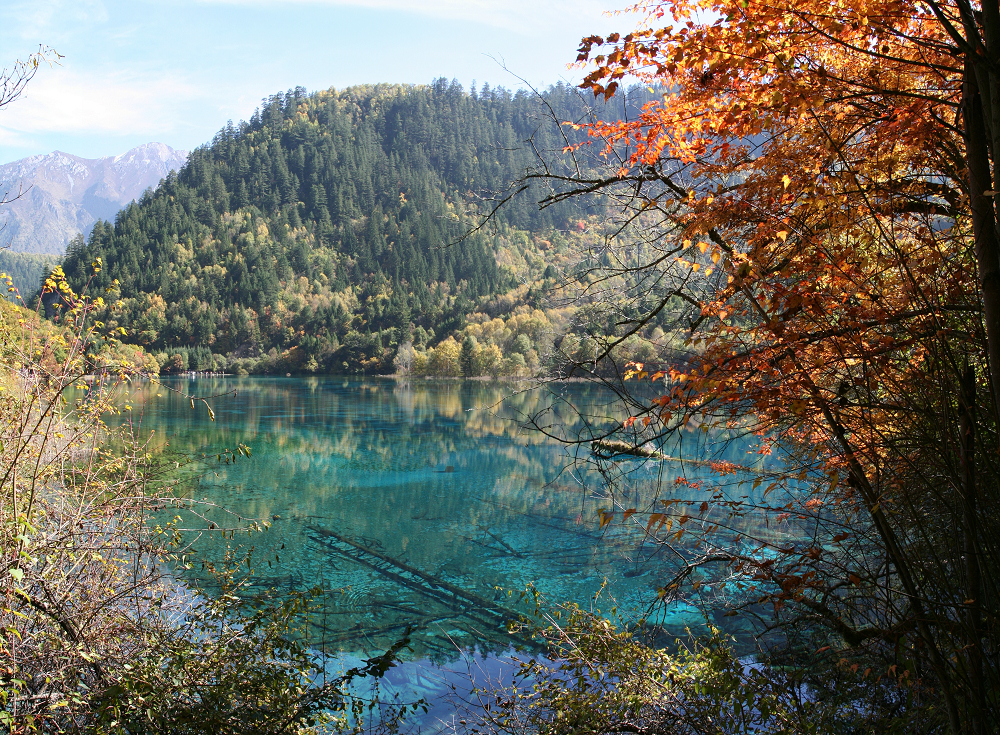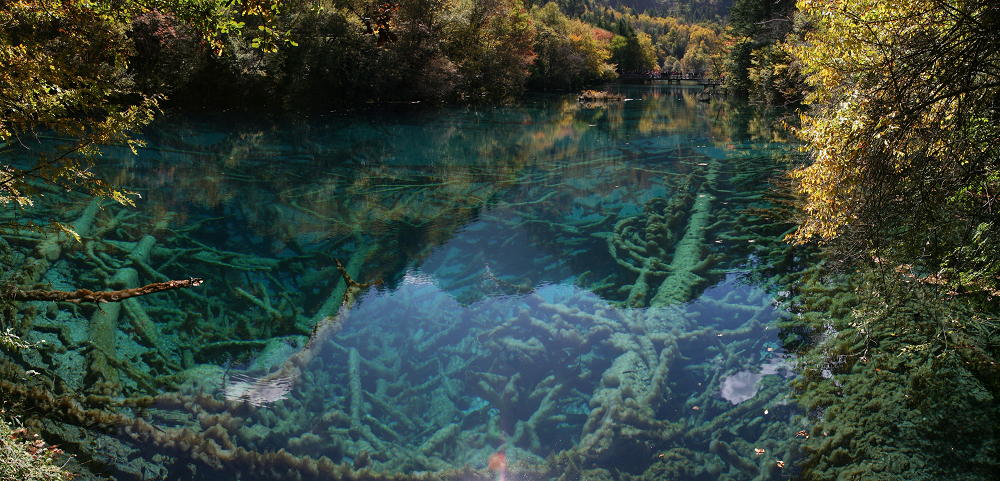AsiaTravel recently embarked on a series of initiatives to improve local practices in rural areas in southwest China. This is the final section of the three part series examining efforts to improve life for those in rural areas and the technologies that enable a better standard of living.
Jiuzhaigou National Park sits in the rugged West of Sichuan at 2000 meters elevation on the edge of Tibet. This cluster of virgin mixed forests is home to several endangered animals; giant pandas and golden snub-nosed monkeys traverse amongst the limestone cliffs and the effervescent blue lakes. Despite its natural beauty, Jiuzhaigou has had a tenuous history. It was discovered in the early 1970s, and hurt by large-scale logging efforts. Jiuzhaigou was declared a national park in 1978, and the park’s ecological restoration began.

Leaves turn magificent colors over a crystal lake
Jiuzhaigou established a formal relationship with Yosemite National Park in 2006 to promote international cooperation that benefits both parks.
AsiaTravel accompanied the Yosemite team on their first official sister park visit to Jiuzhaigou in 2009. On this trip, Yosemite preservationists completed a four day survey trek through Jiuzhaigou valley. Through these trips and related efforts, the sister parks aim to share resource management techniques and cooperate to preserve natural biodiversity.
Jiuzhaigou and Yosemite share a similar history. Jiuzhaigou valley has been home to Tibetan natives for thousands of years. When Jiuzhaigou was declared a national park, these natives were no longer allowed to farm in their local villages. Yosemite park has experienced similar cultural issues; Native Americans were no longer allowed to plant crops in the parks area of Northern California when Yosemite was declared a national park in 1890. The parks have already benefited from communication on several topics, including the construction of wooden walkways to limit the impact of foot traffic on the surrounding environment.

Unique algae give the lakes a unique tint
Hopefully, interpark cooperation will lead to preservation of the endangered animals that reside in Jiuzhaigou and the mythical environment that supports them.
